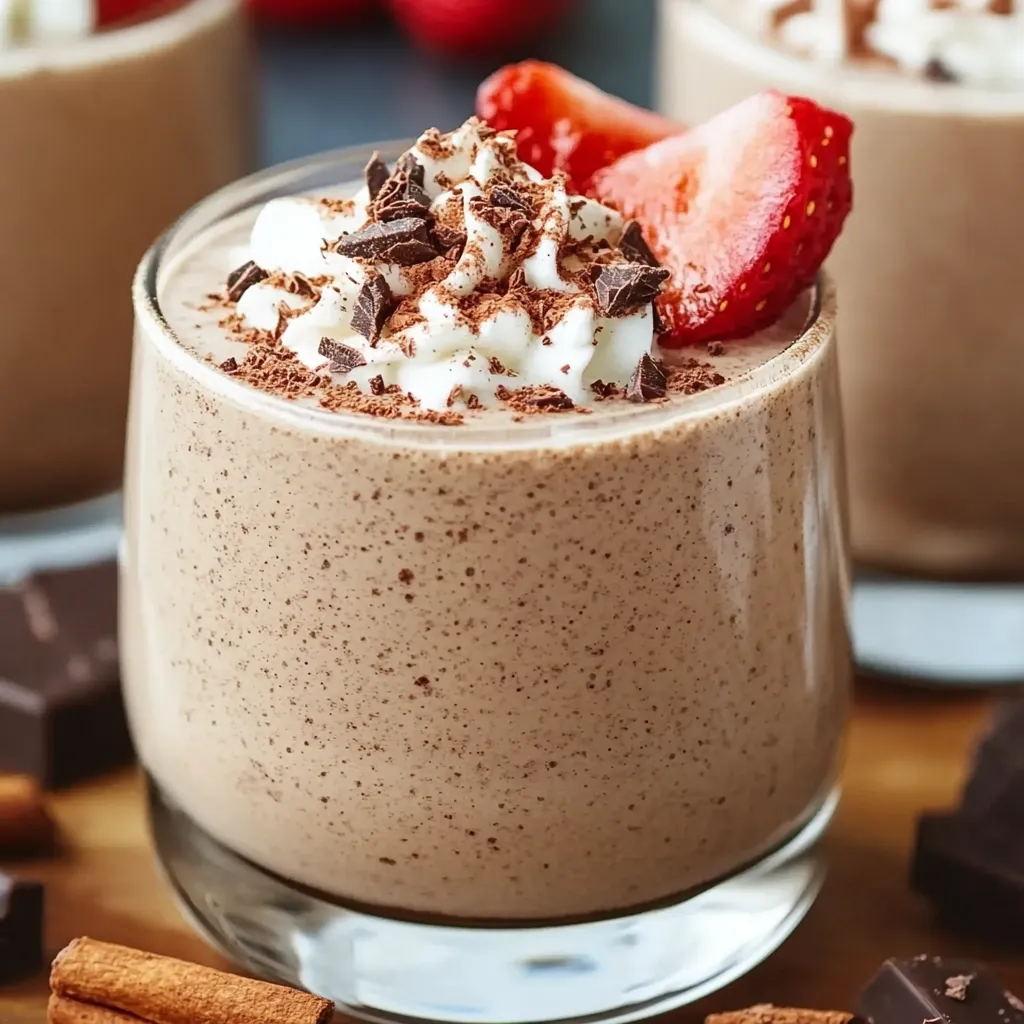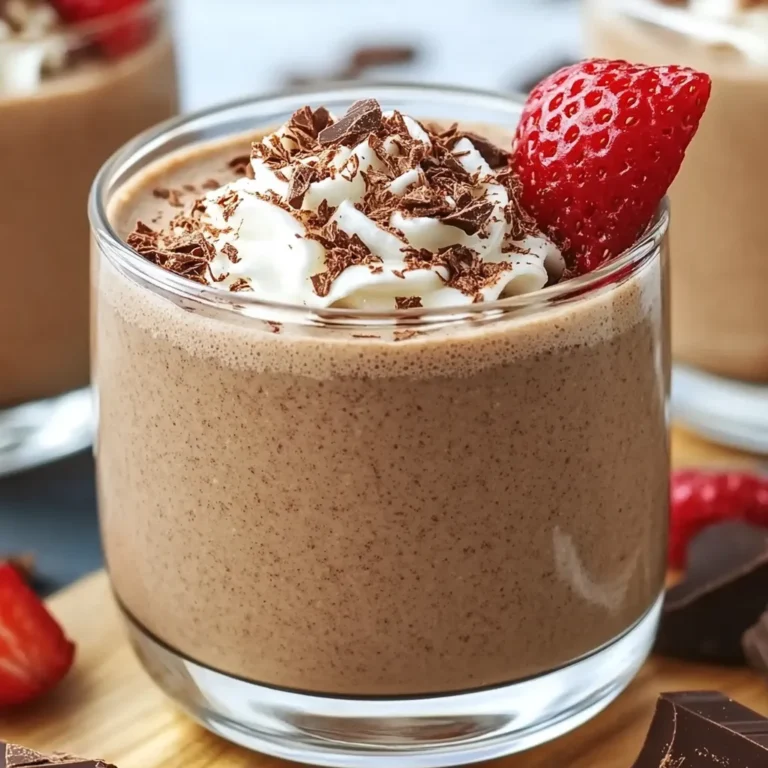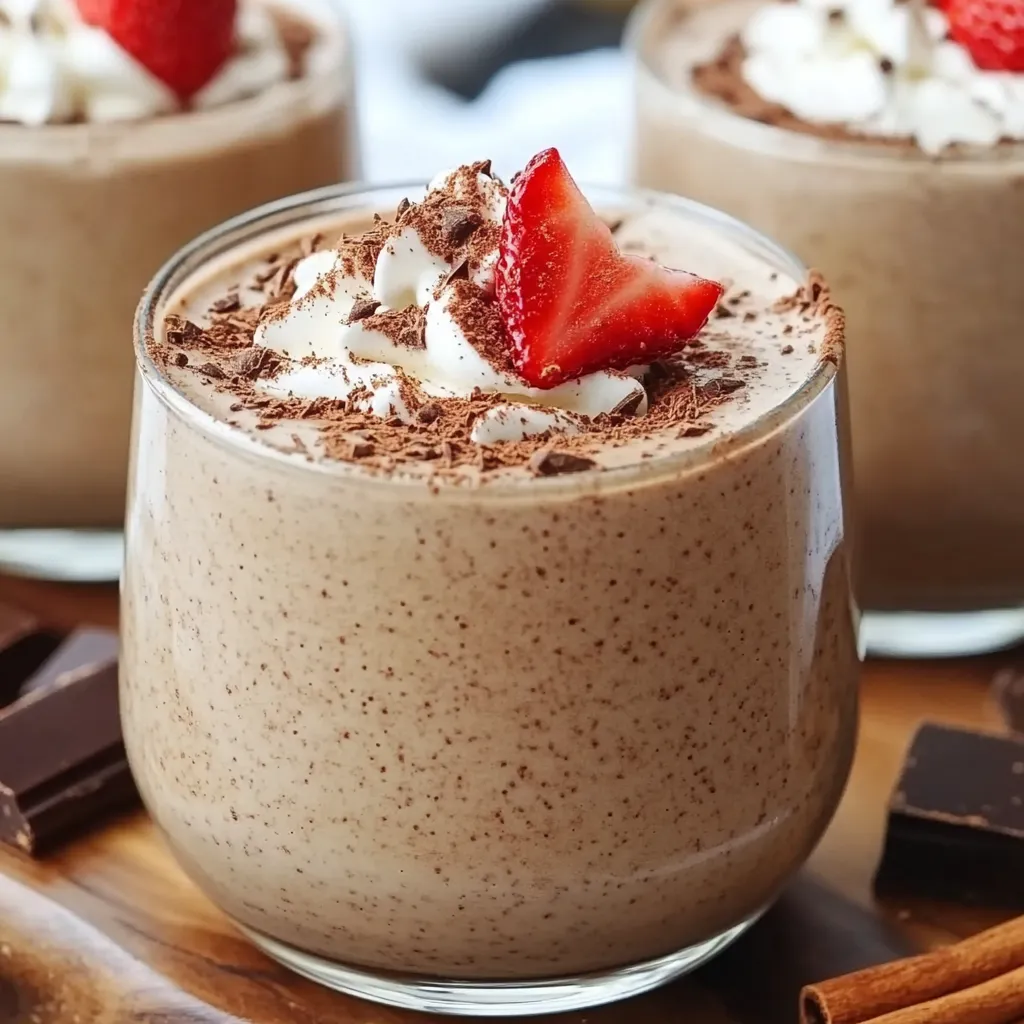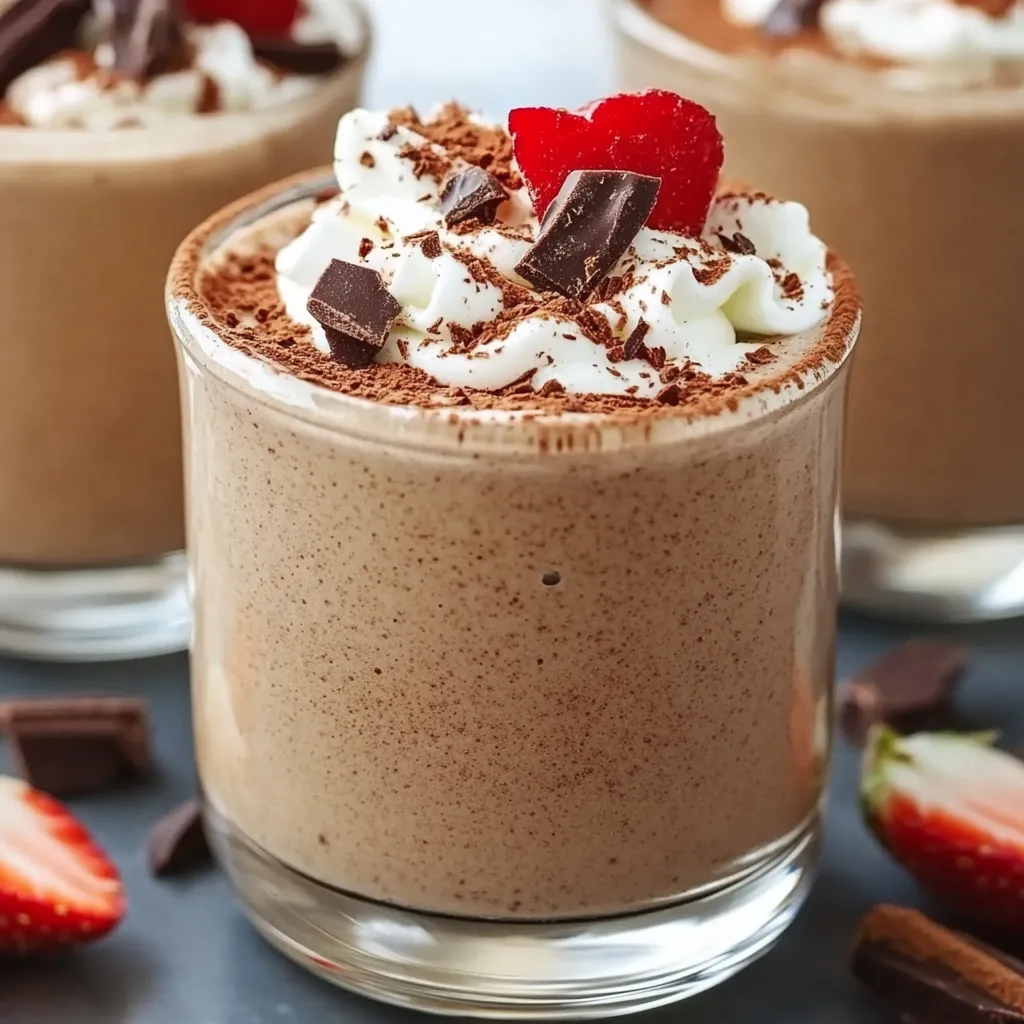I ntroduction to Chocolate Coquito
ntroduction to Chocolate Coquito
Coquito is a cherished traditional Puerto Rican holiday drink, often referred to as Puerto Rico’s answer to eggnog. Rooted deeply in Puerto Rican culture, this creamy coconut-based cocktail has become a staple at holiday gatherings like Christmas, New Year’s Eve, and even Thanksgiving. Its sweet and rich flavor, often spiked with rum, makes it an irresistible treat for celebrating the festive season.
What makes Coquito so special is its versatility. While the classic version is loved by many, there’s been a surge of creative variations in recent years, with the Chocolate Coquito standing out as a modern favorite. This twist combines the silky texture of traditional Coquito with the indulgent taste of dark chocolate, making it a luxurious beverage for chocolate lovers.
Adding chocolate to Coquito elevates its appeal by blending the tropical notes of coconut with the rich, bittersweet flavor of chocolate. Not only does this variation appeal to the sweet tooth, but it also provides an interesting fusion of classic holiday nostalgia with modern flavor trends. To discover the roots of Coquito, check out this traditional Puerto Rican Coquito recipe.
With its growing popularity, the Chocolate Coquito is becoming a must-have at holiday parties. Whether served cold or warm, it’s perfect for sharing with friends and family. For a festive twist on flavor, don’t miss this pumpkin spice version of the classic drink, ideal for fall celebrations.
Incorporating chocolate into Coquito isn’t just about taste—it’s about celebrating tradition while embracing innovation. It’s no wonder this decadent drink has captured hearts worldwide.
History and Significance of Coquito
The history of Coquito is deeply intertwined with Puerto Rican culture. This beloved holiday drink traces its origins back to the island’s colonial era when the blending of coconut milk, sugar, and rum became a festive staple. Traditionally prepared in large batches, Coquito symbolized hospitality and celebration, often served to guests during holiday gatherings.
Over the years, Coquito has become an essential part of Christmas and New Year’s Eve festivities in Puerto Rico. Families gather to prepare this creamy, coconut-based cocktail, often passing down their unique recipes through generations. Its sweet and spiced flavor, enhanced by ingredients like cinnamon and nutmeg, captures the warmth and joy of the holiday season. For a deeper dive into the origins, explore the classic Puerto Rican Coquito recipe.
In modern times, Coquito has evolved beyond its traditional form. Creative variations now include flavors like pumpkin spice, Nutella, and the increasingly popular Chocolate Coquito. These adaptations keep the tradition alive while introducing new ways to enjoy this iconic drink. Curious about other flavor twists? Don’t miss this pumpkin spice Coquito variation for another unique take.
Today, Coquito is more than a drink—it’s a cultural emblem that blends tradition with innovation, making every holiday celebration even more special.
Why Chocolate Coquito Stands Out
Chocolate Coquito offers a decadent twist on the classic Puerto Rican holiday drink, combining the rich, tropical essence of coconut with the luxurious depth of dark chocolate. This unique flavor pairing transforms the traditional creamy Coquito into an indulgent treat that appeals to both chocolate enthusiasts and those seeking a festive beverage.
Compared to the traditional Coquito, which relies on cinnamon and nutmeg for its warmth and spice, Chocolate Coquito introduces a bolder, more dessert-like flavor profile. Its velvety texture and bittersweet chocolate notes make it a standout choice among holiday drinks. For more inspiration on classic recipes, explore the traditional Puerto Rican Coquito recipe.
Unlike eggnog or other holiday cocktails, Chocolate Coquito provides a non-dairy richness from coconut milk and cream of coconut. It’s a perfect alternative for those who prefer a lighter, tropical beverage that still feels indulgent. Looking for other creative Coquito flavors? Check out this pumpkin spice variation for more inspiration.
With its blend of cultural tradition and modern indulgence, Chocolate Coquito has carved a niche as a drink that satisfies holiday cravings while keeping the festive spirit alive.
Ingredients and Tools: Detailed List of Ingredients
To make the perfect Chocolate Coquito, using the right ingredients is essential. Each component contributes to the drink’s signature richness and flavor. Here’s a breakdown of what you’ll need and tips for selecting the best options:
Core Ingredients
- Sweetened Condensed Milk: Provides the primary sweetness and creamy texture. Choose high-quality brands to avoid overly sugary results.
- Evaporated Milk: Adds a lighter, silky consistency that balances the richness.
- Cream of Coconut (e.g., Coco López): Essential for the signature coconut flavor. Look for well-known brands like Coco López for authentic taste.
- Coconut Milk: Complements the cream of coconut with its natural, slightly nutty flavor. Avoid coconut water or low-fat alternatives for a full-bodied drink.
Flavor Enhancers
- Dark or Semi-Sweet Chocolate Chips (Melted): The star ingredient for that indulgent chocolate taste. Opt for high-quality chocolate with at least 60% cocoa for depth of flavor.
- Ground Cinnamon and Nutmeg: Infuse the drink with warm, holiday spices. Freshly ground spices yield the best results.
- Vanilla Extract: Enhances the drink’s overall flavor profile. Pure vanilla extract is preferable over artificial substitutes.
- Pinch of Salt: Balances the sweetness and intensifies the chocolate notes.
Tips for Ingredient Selection
- Use premium brands for coconut-based ingredients to ensure a rich and authentic flavor. For more inspiration on making authentic Coquito, visit this traditional Puerto Rican Coquito recipe.
- Opt for fair-trade chocolate chips to support ethical sourcing while enjoying superior quality.
By prioritizing fresh, high-quality ingredients, your Chocolate Coquito will shine as the ultimate holiday indulgence.
Essential Tools and Equipment
Creating the perfect Chocolate Coquito requires the right tools to ensure a smooth and well-blended drink. Here’s a list of essential equipment and why each one is important:
Must-Have Tools
- Blender: The most crucial tool for achieving the drink’s silky, creamy texture. A high-speed blender ensures all ingredients are evenly incorporated.
- Microwave-Safe Bowl or Double Boiler: Necessary for melting chocolate chips without burning. A smooth, lump-free chocolate base is essential for flavor consistency.
- Pitcher or Airtight Container: Ideal for storing the finished Coquito while it chills. Airtight containers keep the flavors fresh and prevent spoilage.
- Measuring Spoons and Cups: Precise measurements are vital for balancing sweetness, spice, and richness. Avoid guessing to maintain the authentic Chocolate Coquito taste.
Why Precision Matters
- Exact measurements help preserve the traditional flavor profile while ensuring the drink isn’t too sweet or overly spiced. Using a reliable set of measuring tools is key to perfecting recipes like this classic Puerto Rican Coquito.
Optional Tools
- Decorative Glass Bottles: For gifting or serving, these add a festive touch to your presentation.
- Whisk: Useful for mixing before serving, especially after refrigeration.
By using these tools, you’ll guarantee a professional-quality Chocolate Coquito that captures the essence of the holidays.
Preparing the Chocolate Base
The chocolate base is the heart of your Chocolate Coquito, providing its rich and indulgent flavor. Follow these simple steps to melt the chocolate and ensure a silky, lump-free consistency:
Instructions for Melting Chocolate
- Choose Your Chocolate: Use high-quality dark or semi-sweet chocolate chips with at least 60% cocoa for the best results.
- Set Up Your Melting Method:
- Microwave Method: Place the chocolate chips in a microwave-safe bowl. Heat in 15-20 second intervals, stirring between each to avoid overheating.
- Double Boiler Method: If you prefer more control, melt the chocolate in a heatproof bowl placed over simmering water. Stir continuously until smooth.
- Cool Slightly: Once melted, let the chocolate cool for a few minutes before adding it to the other ingredients. This prevents curdling or separation when mixed with the milk base.
Tips for Achieving Smooth Chocolate
- Avoid Water Contact: Even a drop of water can cause the chocolate to seize and become grainy.
- Use Fresh Chocolate: Old or improperly stored chocolate may not melt evenly.
- Stir Constantly: Stirring helps distribute heat and creates a shiny, smooth texture.
Incorporating this perfect chocolate base into your Coquito ensures a decadent and cohesive flavor. For more tips on perfecting traditional drinks, check out this classic Puerto Rican Coquito recipe.
Blending the Ingredients
Blending the ingredients is a critical step in creating the smooth and creamy texture that defines Chocolate Coquito. Here’s a step-by-step guide to ensure perfect consistency:
Steps for Combining Ingredients
- Prepare Your Blender: Ensure your blender is clean and ready for use, as it will combine all the flavors seamlessly.
- Add the Base Ingredients: Pour the sweetened condensed milk, evaporated milk, cream of coconut, and coconut milk into the blender. These ingredients form the rich, creamy base.
- Incorporate the Chocolate: Slowly add the cooled, melted chocolate to the blender. Blending at this stage helps it integrate smoothly without clumping.
- Season the Mixture: Add the ground cinnamon, vanilla extract, nutmeg, and a pinch of salt for a perfect balance of sweetness and spice.
- Blend Until Smooth: Blend on high speed for 1-2 minutes or until the mixture achieves a silky, lump-free texture.
Tips for a Creamy Texture
- Use a high-powered blender to ensure the ingredients emulsify perfectly.
- Avoid over-blending, as excessive air can alter the drink’s consistency.
- If your mixture appears too thick, add a splash of coconut milk to loosen it.
For traditional inspiration, check out this classic Puerto Rican Coquito recipe. The blending process guarantees a luscious Chocolate Coquito perfect for any holiday celebration!
Adding Flavors and Spices
The spices in Chocolate Coquito bring warmth and balance to the drink, enhancing its festive appeal. Incorporating these flavors properly is key to achieving a perfect blend.
How to Add Spices and Flavor
- Add Cinnamon and Nutmeg: Sprinkle in ground cinnamon and a touch of nutmeg to infuse the drink with warm, holiday-inspired notes. Use freshly ground spices for the best aroma and flavor.
- Vanilla Extract: Stir in pure vanilla extract, which ties together the sweetness of the chocolate and coconut components.
- Adjust to Taste: Taste the mixture after blending. If you prefer more spice, add a pinch of cinnamon or nutmeg. For a sweeter profile, consider an extra drizzle of sweetened condensed milk.
For traditional Coquito seasoning tips, explore this classic Puerto Rican Coquito recipe.
Chilling and Storing the Coquito
Proper refrigeration is essential for allowing the flavors of Chocolate Coquito to meld together, resulting in a richer and more balanced taste.
Refrigeration Tips
- Pour the blended Coquito into an airtight container or pitcher.
- Refrigerate for at least 2 hours, though overnight chilling enhances the flavor profile.
Storage Tips for Freshness
- Store Coquito in glass bottles with tight-sealing lids to preserve its creamy texture.
- Shake or stir before serving, as the ingredients may settle over time.
- Consume within 3-4 days for the best taste, but it can last up to a week when stored properly.
For additional tips on keeping your Coquito fresh, check out this traditional Puerto Rican Coquito recipe. Proper chilling and storage make all the difference in delivering a luxurious Chocolate Coquito experience!
Serving Suggestions and Garnishing
The final touch to your Chocolate Coquito lies in its presentation. Garnishing not only enhances the drink’s visual appeal but also adds layers of flavor to the festive experience.
Presentation and Garnish Ideas
- Whipped Cream: Top each glass with a dollop of whipped cream for a decadent finish.
- Chocolate Syrup: Drizzle rich chocolate syrup over the whipped cream or inside the glass before pouring for an extra indulgent look.
- Cinnamon Sticks: Add a cinnamon stick as a stirrer to infuse subtle spice as the drink is enjoyed.
Warm or Cold Serving Options
- Serve chilled for a classic, refreshing Chocolate Coquito. For a frosty option, freeze the glass before serving.
- For a cozy twist, gently heat individual servings in the microwave or on the stovetop, but avoid boiling to maintain the creamy consistency.
For a festive vibe, use decorative glassware or small mugs, especially for warm servings. Curious about other presentation styles? Visit this classic Puerto Rican Coquito recipe for more serving inspiration.
Whether warm or cold, your garnished Chocolate Coquito is sure to be the centerpiece of your holiday celebrations!
Cultural and Practical Insights: Non-Alcoholic and Custom Variations
One of the best aspects of Chocolate Coquito is its flexibility. Whether you prefer a non-alcoholic version or want to explore custom liquor options, the recipe adapts easily to your preferences.
Non-Alcoholic Adaptations
- Simply omit the alcohol to create a family-friendly version of this festive drink. The creamy coconut and chocolate base are flavorful enough to stand on their own.
- To maintain the richness, replace the alcohol with a splash of coconut water or a non-alcoholic chocolate-flavored syrup.
Exploring Liquor Twists
- Classic Rum: Stick with Puerto Rican rum for a traditional flavor.
- Chocolate Vodka: Add depth with chocolate-infused vodka, enhancing the chocolate notes.
- Spiced Rum: Incorporate spiced rum for a warm, aromatic touch that complements the cinnamon and nutmeg.
For more ideas on customizing Coquito recipes, visit this traditional Puerto Rican Coquito recipe.
Pro Tip
Experiment with quantities to find the perfect balance for your taste. Whether non-alcoholic or with a twist, Chocolate Coquito is endlessly adaptable, making it a versatile treat for any celebration.
Common Mistakes to Avoid
When preparing Chocolate Coquito, a few common pitfalls can impact its flavor and consistency. Avoid these mistakes to ensure a perfect result every time:
Tips for Consistency and Flavor
- Don’t Overheat the Chocolate: Overheating can cause the chocolate to seize, leading to grainy texture. Melt gently in a microwave-safe bowl or double boiler.
- Blend Thoroughly: Failing to blend long enough can result in separation of ingredients. Use a high-speed blender for a smooth, creamy texture.
Preventing Spoilage and Separation
- Refrigerate Immediately: Always store Coquito in an airtight container to maintain freshness.
- Shake or Stir Before Serving: Ingredients may settle during refrigeration; mix well to restore the creamy consistency.
For more tips on perfecting traditional recipes, explore this classic Puerto Rican Coquito guide. Avoiding these errors ensures your Chocolate Coquito remains delicious and festive!

FAQs About Puerto Rican Chocolate Coquito
Here are some common questions about Chocolate Coquito to help you perfect this festive drink:
How long does Chocolate Coquito last?
- When stored properly in an airtight container and refrigerated, Chocolate Coquito can last up to 5-7 days. The high dairy content makes it essential to keep it cold. For longer storage tips, check out this classic Coquito storage guide.
Can I substitute ingredients?
- Yes, this recipe is highly adaptable:
- Substitute almond milk or oat milk for a lighter alternative to evaporated milk.
- Use semi-sweet chocolate syrup instead of melted chocolate for convenience.
- Experiment with liquors like spiced rum or chocolate vodka for a unique twist.
Is this recipe vegan-friendly?
- With a few modifications, you can make this recipe vegan-friendly:
- Replace dairy-based milk with coconut cream, coconut milk, and sweetened condensed coconut milk.
- Use a vegan dark chocolate or chocolate syrup.
By making these adjustments, Chocolate Coquito can suit various dietary preferences while retaining its delicious, festive flavors. For inspiration on traditional recipes, explore this Puerto Rican Coquito guide.
Additional Puerto Rican Recipes to Try
Chocolate Coquito pairs beautifully with traditional Puerto Rican dishes, enhancing the festive experience. Here are a few suggestions to complement this rich and creamy drink:
Perfect Pairings
- Arroz con Pollo: The savory and flavorful Puerto Rican chicken and rice dish balances the sweetness of Coquito, creating a well-rounded holiday meal.
- Pasteles: These Puerto Rican tamales, wrapped in banana leaves and filled with seasoned meat, provide a delicious contrast to the dessert-like Coquito.
- Flan de Coco: A creamy coconut flan that harmonizes with the coconut and chocolate notes of Coquito.
For more Puerto Rican recipes, visit this Arroz con Pollo guide. Pairing traditional dishes with Chocolate Coquito is a guaranteed way to impress your guests.
Conclusion and Final Tips
Making Chocolate Coquito is a simple yet indulgent way to celebrate the holidays. This rich drink combines traditional flavors of Coquito with the luxurious taste of dark chocolate, making it perfect for festive gatherings or quiet moments with family.
Feel free to experiment with the recipe—try different spices, adjust the sweetness, or explore unique liquors like spiced rum or chocolate vodka. You can even create a non-alcoholic version to include everyone at the table. For traditional inspiration, check out this classic Puerto Rican Coquito recipe.
With its versatility and ease of preparation, Chocolate Coquito is more than just a drink—it’s a celebration of culture and flavor. Enjoy making it your own this holiday season!


 ntroduction to Chocolate Coquito
ntroduction to Chocolate Coquito
